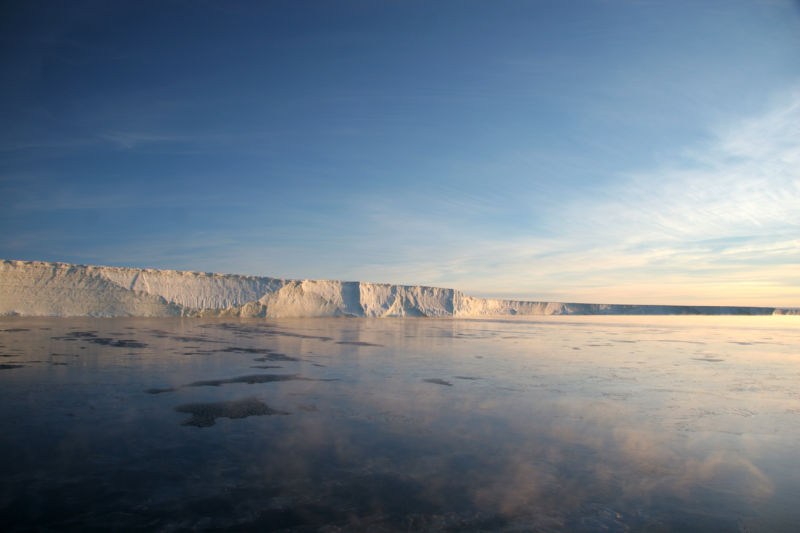
Enlarge / The Stange Ice Shelf in Antarctica. (credit: Mark Brandon)
One of the most shocking climate science studies in recent years came in 2016. That study, from David Pollard at Penn State and Rob DeConto at the University of Massachusetts, Amherst, showed that adding a couple physical processes to their model of the Antarctic ice sheets caused it to produce significantly more sea level rise this century. In their simulation, shrinking Antarctic glaciers raised sea level by a full meter by 2100—and things only picked up from there.
These simulations were much closer to hypotheses than to iron-clad predictions. The model showed these processes—the collapse of ice cliffs above a certain height and pressure-driven wedging apart of ice crevasses by meltwater—could make a huge difference. But such scenarios haven’t been studied well enough in the real world to know if the model was representing them well. Luckily, that task climbed the priority list after the work was published.
A newly published study led by Tamsin Edwards at King’s College London first dove into DeConto’s and Pollard’s simulations for some clarity. This team thought they had a better way of characterizing the range of results in the simulations to find the highest probability answers. They didn’t have the supercomputer time to repeat the simulations and add new ones, so instead they “emulated” the simulations by representing the existing ones with some statistics. That allows them to fill in the gaps between the limited number of simulations.
Source: https://arstechnica.com/science/2019/02/studies-question-worst-case-sea-level-rise-but-lower-rise-aint-great/
Droolin’ Dog sniffed out this story and shared it with you.
The Article Was Written/Published By: Scott K. Johnson
! #Headlines, #ClimateChange, #Oceans, #TechNews, #Newsfeed, #syndicated, news
No comments:
Post a Comment